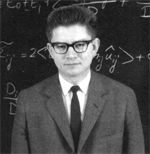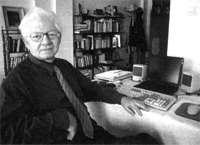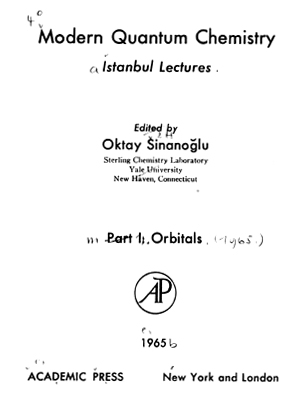 |

|
 |
 |

|
 |

 |
This book is the result of the joint efforts of a group of lecturers who came together in Istanbul in the summer of 1964 to lecture on Modern Quantum Chemistry. The lectures follow a definite sequence and attempt to present a detailed, up-to-date, and coherent picture of modern quantum chemistry to graduate students and researchers. The book is in three parts, Part I on orbitals, Part II on interactions and effects of electron correlation, and Part III on action of light and organic crystals. The parts are connected, though each is quite self-contained. The book should be useful for advanced quantum chemistry courses, as well as a reference. Parts I, II, and III may be used individually or in combination. Each lecture, by and large, starts with an introduction, before proceeding to current developments and problems. Many lectures contain new work and approaches not published before. The over-all theoretical picture that emerges applies to electronic properties, stabilities, and spectra of saturated and unsaturated molecules, sigma and pi systems, and also to intermediate species, radicals, and triplet states. |
Modern Quantum Chemistry - Istanbul Lectures 1965
CONTENTS
List of Contributors to Part I ................................ v
Preface ....................................................... vii
Condensed Table of Contents of Parts I - III .................. xiii
Introduction, Parts I - III, O. Sinanoğlu ..................... 1
Section I. A. Saturated Compounds
1. Present Status of the Theory of Electronic Structure of Molecules
ROBERT G. PARR
1. The Problem ............................................... 5
2. One- and Two-Electron Cases ............................... 6
3. Preliminaries for Many-Electron Cases ..................... 9
4. Many-Electron Cases ....................................... 10
3. Implementation ............................................ 13
6. Conclusion ................................................ 14
2. Chemical Predictions by MO Theory : The Rare Gas Halides
JOSHUA J0RTNER and STUART A. RICE
1. Introduction .............................................. 15
2. The Electron-Correlation Model ............................ 16
3. The Molecular Orbital Model ............................... 18
4. The Valence Bond Model .................................... 25
5. Interpretation of Physical Properties ..................... 28
6. Excited Electron States ................................... 33
7. Discussion of the Theoretical Models ...................... 43
References ................................................ 45
3. Sigma Molecular Orbital Theory and Chemical Reactivity
KENICHI FUKUI
1. Introduction .............................................. 49
2. Sigma Molecular Orbital ................................... 49
3. Chemical Reactivity Theory ................................ 59
4. Electron Delocalization at the Transition State ........... 63
5. Simple Interpretation of Reactivity of Saturated Compounds 70
6. Conclusion ................................................ 81
References ................................................ 63
4. Localized Self-Consistent Field Orbitals in Atoms ond Molecules
KLAUS RUEDENBERG
1. Introduction .............................................. 85
2. Arbitrariness of Hartree-Fock Orbitals .................... 86
3. Fixation of Hartree-Fock Orbitals ......................... 88
4. Canonical SCF Orbitals .................................... 89
5. Externally Localized SCF Orbitals ......................... 89
6. Intrinsically Localized SCF Orbitals ...................... 90
7. Choice of Separation Function f(r12 ) ...................... 92
8. Construction of Localized Orbitals from an Arbitrary Set
of SCF Orbitals ....................................... 93
9. Localized Orbitals and Molecular Symmetry ................. 93
10. Localized Orbitals in the Absence of Symmetry ............. 95
11. Localized Molecular Orbitals in Delocalized Electronic Systems 98
References ................................................ 99
5. Integral Hellmann-Feynman Theorem, Barriers to lnternal Rotations,
and Isoelectronic Processes
ROBERT G. PARR
1. Integral Hellmann-Feynman Theorem ......................... 101
2. Barriers to Internal Rotation ............................. 102
3. Isoelectronic Processes ................................... 104
References ................................................ 105
Section I. B. Pi-Electron Systems
1. General Survey of Pi-Electron Methods and Problems
ROBERT 0. PARR
1. Pi-Electron Approximation ................................. 107
2. Pi-Electron Methods ....................................... 109
3. Pi-Electron Problems ...................................... 110
References ................................................ 112
2. Three-Dimensional and One-Dimensional Free-Electron Molecular
Orbitals
RICHARD L. HUMMEL and KLAUS RUEDENBRRG
1. Introduction .............................................. 113
2. General Solution .......................................... 114
3. Determination of Eigenvalues as Functions of Delta ........ 116
4. One-Dimensional Model ..................................... 118
5. Comparison of Energies .................................... 119
6. Comparison of Wavefunctions ............................... 120
7. Conclusion ................................................ 121
Appendix .................................................. 122
References ................................................ 123
3. Self-Consistent Field Theory of Noncloned Shell Systems with
Application to Pi-Electron Systems
R. LEFEBVRE
1. Introduction ............................................... 125
2. Self-Consistent Field Equations for s Closed Shell System.
The Brillouin Theorem .................................. 126
3. Self-Consistent Conditions for a Doublet State with One
Nonclosed Shell ........................................ 128
4. Self-Consistent Conditions for a Triplet State with Two
Nonclosed Shells ....................................... 131
5. The Lowest Triplet Excitation Energies of Some Even Alternant
Hydrocarbons Calculated to Various Degrees
of Self-Consistency .................................... 132
Summary .................................................... 134
Referestces ................................................ 134
4. Charge Transfer and Radical lons
L. J. OOSTERHOFF
1. Introduction ............................................... 137
2. Formulae ................................................... 139
3. Loosely Bound and Semi-ionic Complexes:
Benzene-Iodine and Trimethylamine-Iodine ................. 142
4. Ionic Compounds: Sodium Iodide ............................. 145
5. The Organic Chemist's View of the Problem .................. 148
6. Radical Ions ............................................... 151
7. Photoionization ............................................ 152
References ................................................. 154
5. Some Properties of Pi-lons and Triplets
A. T. AMOS
1. Introduction ................................................ 157
2. Restricted Hartree-Fock ..................................... 157
3. Unrestricted Hartree-Fock ................................... 158
4. Energies and Charge Densities ............................... 159
5. The Transformation Properties of the Orbitals ............... 161
6. Spin Properties of Psi(UHF) ................................. 164
7. Zero-Field Splitting in Triplet States ...................... 167
8. Conclusion .................................................. 169
References .................................................. 169
6. Critical Examination of Pi-Electron Theories
a. Applicability of the Hückel and Pariser-Parr-Type Methods
J. KOUTECKÝ
Text ....................................................... 171
References ................................................. 182
b. Orbital Basis of Zero Differential Overlap
INGA FISCHER-HJALMARS
1. Introduction ................................................. 185
2. Expansion Method ............................................. 187
3. Applications to the Fock Operator ............................ 189
4. Reformulation of the ZDO Assumption .......................... 192
References ................................................... 193
c. Electron Distribution In Heteromolecules
R. DAUDEL
1. Importance of the Notion of Charge ........................... 195
2. Pariser, Parr, and Hückel (or Pauling and Wheland)
Approxinsations ........................................ 195
3. The Nature of the Pariser and Parr Approximations ............ 196
4. Effect of the Introduction of OAO's on the pi-Electron
Distribution ........................................... 197
5. Comparison between Pariser, Parr. and Pople Method and
Hückel Method ..................................... 199
References .................................................. 202
d. Semiempirical Parameters in MO Theory
INGA FISCHER-HJALMARS
1. Introduction ................................................. 203
2. One-Center Integrals ......................................... 203
3. Two-Center Integrals ......................................... 210
References ................................................... 213
e. Extended CI Calculations on Benzene
J. KOUTECKÝ
Text ....................................................... 215
References ................................................. 220
f. The Pi-Electron Approximation and Coulomb Repulsion Parameters
0. SINANOGLU and M. K. ORLOFF
1. The Pi-Electron Approximation ................................ 221
2. Coulomb Repulsions Parameters ................................ 225
References ................................................... 231
AUTHOR INDEX .................................................... 233
SUBJECT INDEX ................................................... 239
